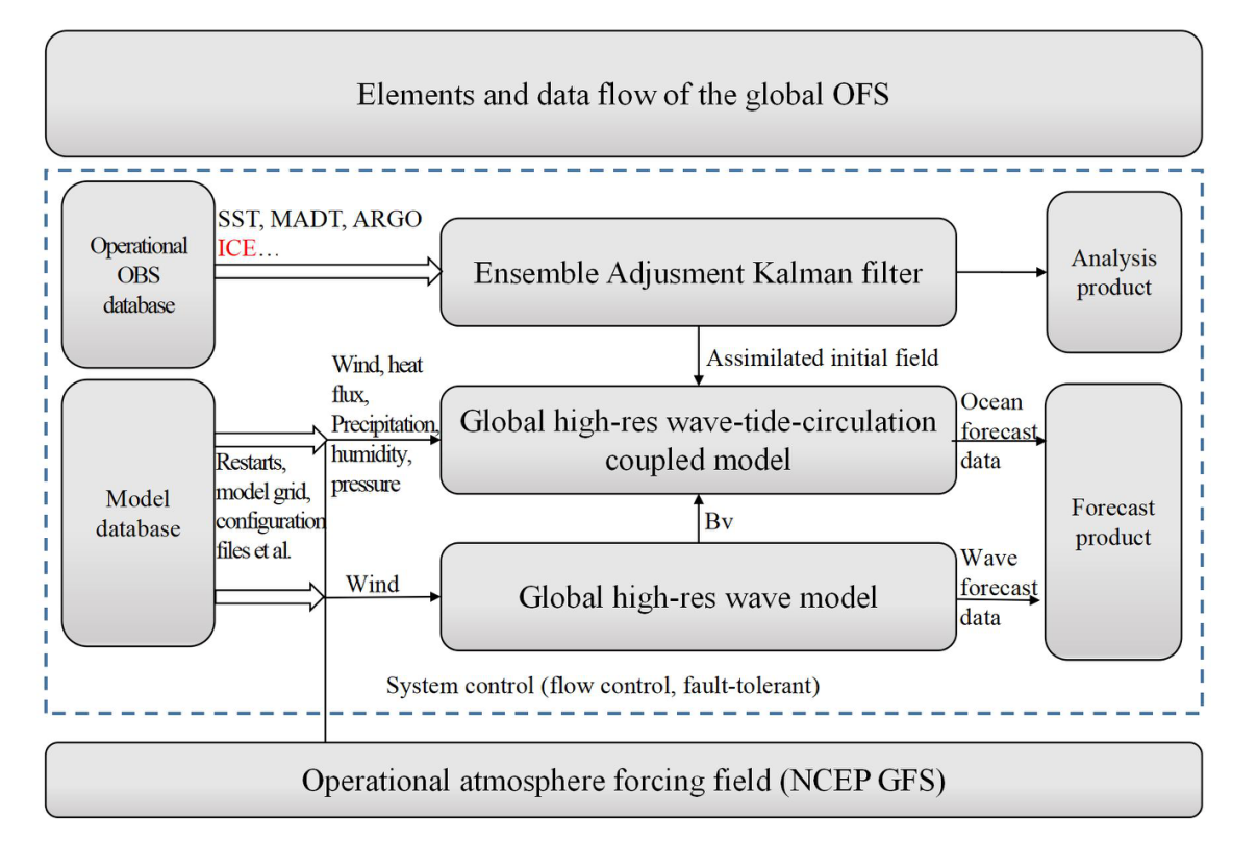The Ocean Forecasting System (OFS) was initially developed by the First Institute of Oceanography (FIO) in 2010 to predict extreme weather, monitor ocean condition and safeguard social development.
The OFS consists of a wave-tide-circulation coupled model system, a real-time marine monitoring system, operational application and service, and the early warning of marine hazards and service. Coupled with Marine Science and Numerical Modeling Laboratory (MASNUM) wave model, MOM5 ocean general circulation model and SIS sea ice model, OFS applies the non-breaking wave-induced vertical mixing (Bv) theory established by Professor Fangli Qiao, with a horizontal resolution of 0.1°×0.1° and 54 layers in the vertical, in which eight main tidal potentials are simulated. It can provide 5-day forecast products of surface wave height, wave period, sea level, three-dimensional ocean current, sea temperature and salinity, etc. The general workflow of OFS is shown in Figure 1. The data input comes from two sources, including observation data and model data, both of which have been subject to validation. The analysis product is generated through Ensemble Adjustment Kalman filter assimilation, while the forecast product is generated through global high-resolution wave-tide-circulation coupled model and global high-resolution wave model with input from model database. OFS is forced by NCEP GFS operational atmosphere forcing field.
Overall, long-term validations have indicated that OFS can provide high-quality operational forecasting results, which are publicly accessible via http://144.123.38.62:2020/

Figure showing workflow of OFS
